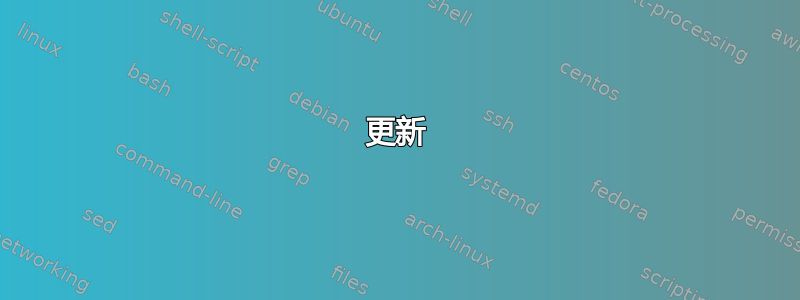
我正在尝试制作一个文档,文档左侧、中间或右侧有图像,文本气泡和指向这些图像的手。我使用 lualatex,因为我会用到像梵文这样的复杂字符。我附上了一张几乎我想要的图像。请注意,气泡中的手必须有一个角度,以便它指向图像。我想我必须手动给出角度。在我手头的图形中,我将使用图像作为文本框,\tcolorbox但对于角度可调的手,我期待在这里得到一些想法。
这里是起点,但是这里没有我使用的复杂字体的输出,甚至输出也是\tcbox{he's a boy}一个空框:
\documentclass[a4paper]{article}
\usepackage{graphicx}
\graphicspath{ {./} {../../items/} }
\usepackage[margin=2cm]{geometry}
\usepackage{tcolorbox}
%\usepackage{babel}
\usepackage{fontspec}
\usepackage{polyglossia}
%\babelprovide[maparabic,import,main]{hindi}
%\babelprovide[onchar=ids fonts]{english}
%\babelfont{sf}{Nakula}
%\babelfont[english]{sf}{Noto Sans}
%\defaultfontfeatures{Renderer=Harfbuzz}
\setdefaultlanguage{sanskrit}
\setotherlanguages{english}
\setmainfont{chandas}
\newfontfamily\eng[Script=Latin]{Noto Serif}
\usepackage[export]{adjustbox}
\usepackage{booktabs, tabularx}
\newcolumntype{C}{>{centering\arraybackslash}X}
\begin{document}
\begin{center} \huge
संस्कृतम् - english \\
\end{center}
\begin{tabularx}{\textwidth}{llXr}
\includegraphics[height=4cm]{boy1} &
\tcbox{this is a boy \\ एषः बालकः}
& &
\includegraphics[height=4cm]{boy2}
\\ &
\tcbox{ he's a boy \\ सः बालकः}
\end{tabularx}
\end{document}
答案1
这不是一个很好的方法,因为一切都是手动的,没有使用任何样式,但你可能会明白:
\documentclass[tikz]{standalone}
\usepackage{tikzpeople,dingbat}
\begin{document}
\begin{tikzpicture}
\node at (0,0) {};
\node[bob,shirt=blue,minimum size=1.5cm](bob1) at (0,0) {};
\node[bob,shirt=yellow,minimum size=1.5cm](bob2) at (10,0) {};
\node[anchor=north west,text width=1.5cm,draw,rounded corners=0.5cm,inner sep=0.3cm,outer sep=0.3cm](this) at (bob1.south east) {This is a boy!};
\node[anchor=south east,rotate=-45,inner sep=0pt,outer sep=0pt,xshift=0.75cm,yshift=-0.2cm] at (this.north west) {\rightpointleft};
\node[anchor=north,text width=1.5cm,draw,rounded corners=0.5cm,inner sep=0.3cm,outer sep=0.3cm](hes) at (this.south) {He's a boy!!};
\node[anchor=south east,rotate=35,inner sep=0pt,outer sep=0pt,xshift=-0.1cm,yshift=-0.4cm] at (hes.north east) {\leftpointright};
\end{tikzpicture}
\end{document}
更新
以下是一种方法,结合rectangle with rounded corners在https://tex.stackexchange.com/a/68568/156791正确放置手并以相同的角度旋转(理论上,你也可以以不同的方式旋转它)
\documentclass[tikz]{standalone}
\usepackage{tikzpeople,dingbat}
\makeatletter
\pgfkeys{/pgf/.cd,
rectangle corner radius/.initial=3pt
}
\newif\ifpgf@rectanglewrc@donecorner@
\def\pgf@rectanglewithroundedcorners@docorner#1#2#3#4{%
\edef\pgf@marshal{%
\noexpand\pgfintersectionofpaths
{%
\noexpand\pgfpathmoveto{\noexpand\pgfpoint{\the\pgf@xa}{\the\pgf@ya}}%
\noexpand\pgfpathlineto{\noexpand\pgfpoint{\the\pgf@x}{\the\pgf@y}}%
}%
{%
\noexpand\pgfpathmoveto{\noexpand\pgfpointadd
{\noexpand\pgfpoint{\the\pgf@xc}{\the\pgf@yc}}%
{\noexpand\pgfpoint{#1}{#2}}}%
\noexpand\pgfpatharc{#3}{#4}{\cornerradius}%
}%
}%
\pgf@process{\pgf@marshal\pgfpointintersectionsolution{1}}%
\pgf@process{\pgftransforminvert\pgfpointtransformed{}}%
\pgf@rectanglewrc@donecorner@true
}
\pgfdeclareshape{rectangle with rounded corners}
{
\inheritsavedanchors[from=rectangle] % this is nearly a rectangle
\inheritanchor[from=rectangle]{north}
\inheritanchor[from=rectangle]{north west}
\inheritanchor[from=rectangle]{north east}
\inheritanchor[from=rectangle]{center}
\inheritanchor[from=rectangle]{west}
\inheritanchor[from=rectangle]{east}
\inheritanchor[from=rectangle]{mid}
\inheritanchor[from=rectangle]{mid west}
\inheritanchor[from=rectangle]{mid east}
\inheritanchor[from=rectangle]{base}
\inheritanchor[from=rectangle]{base west}
\inheritanchor[from=rectangle]{base east}
\inheritanchor[from=rectangle]{south}
\inheritanchor[from=rectangle]{south west}
\inheritanchor[from=rectangle]{south east}
\savedmacro\cornerradius{%
\edef\cornerradius{\pgfkeysvalueof{/pgf/rectangle corner radius}}%
}
\backgroundpath{%
\northeast\advance\pgf@y-\cornerradius\relax
\pgfpathmoveto{}%
\pgfpatharc{0}{90}{\cornerradius}%
\northeast\pgf@ya=\pgf@y\southwest\advance\pgf@x\cornerradius\relax\pgf@y=\pgf@ya
\pgfpathlineto{}%
\pgfpatharc{90}{180}{\cornerradius}%
\southwest\advance\pgf@y\cornerradius\relax
\pgfpathlineto{}%
\pgfpatharc{180}{270}{\cornerradius}%
\northeast\pgf@xa=\pgf@x\advance\pgf@xa-\cornerradius\southwest\pgf@x=\pgf@xa
\pgfpathlineto{}%
\pgfpatharc{270}{360}{\cornerradius}%
\northeast\advance\pgf@y-\cornerradius\relax
\pgfpathlineto{}%
}
\anchor{before north east}{\northeast\advance\pgf@y-\cornerradius}
\anchor{after north east}{\northeast\advance\pgf@x-\cornerradius}
\anchor{before north west}{\southwest\pgf@xa=\pgf@x\advance\pgf@xa\cornerradius
\northeast\pgf@x=\pgf@xa}
\anchor{after north west}{\northeast\pgf@ya=\pgf@y\advance\pgf@ya-\cornerradius
\southwest\pgf@y=\pgf@ya}
\anchor{before south west}{\southwest\advance\pgf@y\cornerradius}
\anchor{after south west}{\southwest\advance\pgf@x\cornerradius}
\anchor{before south east}{\northeast\pgf@xa=\pgf@x\advance\pgf@xa-\cornerradius
\southwest\pgf@x=\pgf@xa}
\anchor{after south east}{\southwest\pgf@ya=\pgf@y\advance\pgf@ya\cornerradius
\northeast\pgf@y=\pgf@ya}
\anchorborder{%
\pgf@xb=\pgf@x% xb/yb is target
\pgf@yb=\pgf@y%
\southwest%
\pgf@xa=\pgf@x% xa/ya is se
\pgf@ya=\pgf@y%
\northeast%
\advance\pgf@x by-\pgf@xa%
\advance\pgf@y by-\pgf@ya%
\pgf@xc=.5\pgf@x% x/y is half width/height
\pgf@yc=.5\pgf@y%
\advance\pgf@xa by\pgf@xc% xa/ya becomes center
\advance\pgf@ya by\pgf@yc%
\edef\pgf@marshal{%
\noexpand\pgfpointborderrectangle
{\noexpand\pgfqpoint{\the\pgf@xb}{\the\pgf@yb}}
{\noexpand\pgfqpoint{\the\pgf@xc}{\the\pgf@yc}}%
}%
\pgf@process{\pgf@marshal}%
\advance\pgf@x by\pgf@xa%
\advance\pgf@y by\pgf@ya%
\pgfextract@process\borderpoint{}%
%
\pgf@rectanglewrc@donecorner@false
%
% do southwest corner
\southwest\pgf@xc=\pgf@x\pgf@yc=\pgf@y
\advance\pgf@xc\cornerradius\relax\advance\pgf@yc\cornerradius\relax
\borderpoint
\ifdim\pgf@x<\pgf@xc\relax\ifdim\pgf@y<\pgf@yc\relax
\pgf@rectanglewithroundedcorners@docorner{-\cornerradius}{0pt}{180}{270}%
\fi\fi
%
% do southeast corner
\ifpgf@rectanglewrc@donecorner@\else
\southwest\pgf@yc=\pgf@y\relax\northeast\pgf@xc=\pgf@x\relax
\advance\pgf@xc-\cornerradius\relax\advance\pgf@yc\cornerradius\relax
\borderpoint
\ifdim\pgf@x>\pgf@xc\relax\ifdim\pgf@y<\pgf@yc\relax
\pgf@rectanglewithroundedcorners@docorner{0pt}{-\cornerradius}{270}{360}%
\fi\fi
\fi
%
% do northeast corner
\ifpgf@rectanglewrc@donecorner@\else
\northeast\pgf@xc=\pgf@x\relax\pgf@yc=\pgf@y\relax
\advance\pgf@xc-\cornerradius\relax\advance\pgf@yc-\cornerradius\relax
\borderpoint
\ifdim\pgf@x>\pgf@xc\relax\ifdim\pgf@y>\pgf@yc\relax
\pgf@rectanglewithroundedcorners@docorner{\cornerradius}{0pt}{0}{90}%
\fi\fi
\fi
%
% do northwest corner
\ifpgf@rectanglewrc@donecorner@\else
\northeast\pgf@yc=\pgf@y\relax\southwest\pgf@xc=\pgf@x\relax
\advance\pgf@xc\cornerradius\relax\advance\pgf@yc-\cornerradius\relax
\borderpoint
\ifdim\pgf@x<\pgf@xc\relax\ifdim\pgf@y>\pgf@yc\relax
\pgf@rectanglewithroundedcorners@docorner{0pt}{\cornerradius}{90}{180}%
\fi\fi
\fi
}
}
\makeatother
\begin{document}
\tikzset{textbox/.style={text width=1.5cm,rectangle with rounded corners,draw,rectangle corner radius=10pt,align=center,outer sep=0pt}}
\tikzset{finger_right/.style={anchor=west,inner sep=0pt,outer sep=0pt}}
\newcommand{\rightfinger}[1]{\node[finger_right,rotate=#1] at (hes.#1) {\hspace{-0.2em}\raisebox{-2ex}{\leftpointright}};}
\begin{tikzpicture}
\node at (0,0) {};
\node[bob,shirt=blue,minimum size=1.5cm](bob1) at (0,0) {};
\node[bob,shirt=yellow,minimum size=1.5cm](bob2) at (10,0) {};
\node[anchor=north west,text width=1.5cm,draw,rounded corners=0.5cm,inner sep=0.3cm,outer sep=0.3cm](this) at (bob1.south east) {This is a boy!};
\node[anchor=south east,rotate=-45,inner sep=0pt,outer sep=0pt,xshift=0.75cm,yshift=-0.2cm] at (this.north west) {\rightpointleft};
\node[anchor=north,textbox,yshift=-0.5cm](hes) at (this.south) {He's a boy!};
\rightfinger{90}
\rightfinger{45}
\rightfinger{25}
\rightfinger{0}
\rightfinger{-15}
\rightfinger{-30}
\end{tikzpicture}
\end{document}
但问题是:在圆形上,手指的旋转和边界上的角锚点会匹配。但圆角矩形的问题在于,这不起作用,那么在这些情况下,你到底希望你的图形是什么样子的呢?





